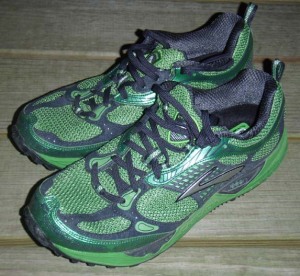The postcard lies on a counter in my office. Purchased as inspiration, it’s now a reminder of something lost.

A 1906 postcard of the Wabash River.
I didn’t run the Wabash Heritage Trail Marathon today. Pain and instability in my left knee — proof that no good deed goes unpunished — made running that distance impractical. Then again, for the past several days I couldn’t run to the mailbox without hobbling somewhere between the sidewalk and the road.
The postcard, mailed from Lafayette, Ind., in February 1906, pictures a scene “On the Banks of The Wabash — Lafayette, Ind.” When looking for a fall trail marathon to run, it was the course of the Wabash Heritage Trail race that appealed to me. In my youth, I spent countless hours on the Wabash, walking its banks, wading its waters, and searching for arrowheads in nearby fields. The Wabash is part of who I am.
The opportunity to run for miles along the Wabash River was too good to pass up. And the route, an out-and-back from Battle Ground to Fort Ouiatenon, involved two locations that also hold fond memories, one from college, the other a few years ago. Indeed, this was the perfect marathon. So I put in hours of training, built a mileage base, and mentally prepared.
But sometimes the best of plans go awry.
Four weeks before the race, just days after my last long run, a 24-miler that went well, I spent an afternoon helping my father move gravel for a building project. Not half an hour into the work, hauling stone in a wheelbarrow, my left knee began to ache. It was a dull but constant reminder that something was wrong, but not to the extent that it would hinder my running. At least not yet.
The real problem started five days later, after running hard between mile markers of a cross-country course where I was getting splits for my daughter’s team. After that day’s invitational I realized my knee was hurting again, but it was a different pain in a different spot. More intense.
Things went downhill from there.
Rest didn’t help. Nor easy spinning on the trainer. Nor stretching. At least not for long, and not with any consistency. After seeming better one day, it would be worse the next. No rhyme. No reason. And with no health insurance — one of the joys of being a self-employed writer whose last name isn’t Grisham or Patterson — there wasn’t the first thought of seeing a doctor. It wasn’t financially feasible.
So I waited. I spun and stretched and took days off or ran a few easy miles. And I hoped. I prayed. More than anything, I just wanted to run. To test myself along the banks of the Wabash. To stride beside that beautiful river of my youth.
When I found the postcard eight days before the race, I knew it would be the perfect thing to use with my blog entry about the marathon. I was still planning to run. Still thinking. Still hoping.
That all changed yesterday. Following a day in which the knee seemed to be improving, things were worse than ever. I made the decision, grabbed a weed cutter and took a walk at Westwood to let the trees minister to me. I would not race the next day. It wasn’t clear whether I would run anytime soon.
There’s great irony that the knee felt better today. That I was able to get out on the road bike, for the first time in what seems like forever, and put the wind in my face. I chose to do not what was easy, but what was hard. Riding so the wind would be against me on the way home. Taking in several nearby climbs, including Pest House Hill twice.
All the while, the knee felt fine.
Taking a few strides this evening, there was no pain, but there remains a sense that something isn’t working properly, the mechanics amiss.
For now, though, I have the bike. But there remains a marathon on my schedule yet this year. I have time yet to coax the troublesome knee back to health, and a full year to get ready for the race I missed today. There are no certainties about the knee, but the Wabash River will still be there.
Road bike: 22.58 miles — Henry County



You must be logged in to post a comment.